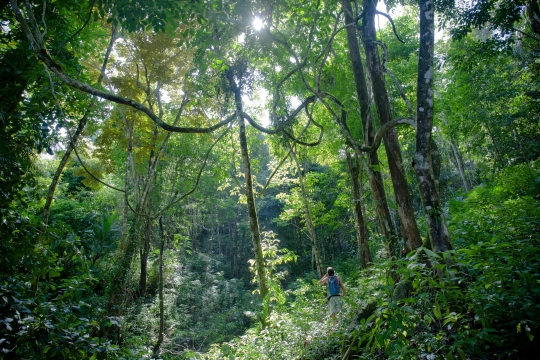Costa Rica has been a pioneer in implementing policies to protect and promote ecosystem services. One of the most successful innovative public financing schemes implemented more than twenty years ago was the “payments for ecosystem services” (PES), which along with other policies and enabling conditions led to a dramatic increase in its forest cover, from less than 30% in the 1980s to 54% of its territory today.
EfD Central America (EfD-CA) researchers have collaborated in the design and impact evaluation of this scheme for more than 15 years and continue to work closely in the subject, this time on the steps to be taken to open up new avenues of financing.
EfD-CA senior researcher and director and leader of the Latin-American Chair of Environmental Decisions for Global Change, Roger Madrigal, presented this research efforts during Scotland’s Biennial Land Use and Environment Conference XII: Rewarding the Delivery of Public Goods: How to Achieve this in Practice? Madrigal participated as key note speaker in the: “What mechanisms are available for rewarding land managers for the provision of public goods?” session with his presentation “Bridging the investment gap for payment for ecosystem services in Costa Rica”, he was also a panel speaker in the Scottish Parliament Cross Party Group On Rural Policy session named: Delivering Public Goods, where Madrigal discussed the challenges for Payments for Ecosystem Services Schemes.
The presentations reviewed major aspects of Costa Rica's PES experience, from program design and implementation to the steps it has taken to open up new opportunities of financing.
Madrigal focused and the challenges and paths to possibly tackle this challenges, he concludes that a PES success does not emerge in a vacuum, that a standard recipe does not exist but requires a set of enabling conditions to be successful implementing a PES scheme. He also acknowledges that to guarantee sustainability, PES schemes should be flexible, dynamic, and capable of both learning-by-doing and of adapting to changing political, social, and environmental contexts
And last but not least, the participation of private sector as a key potential funding source for filling the conservation financing gap since most countries are unable to raise adequate public funds for green investments, however this necessity requires better science and institutions, “the more solid the information underpinning the PES scheme, the less likely financial contributors are to be disenchanted with it” Madrigal said during his keynote presentation.
Part of Costa Rica’s success has been due to willingness to get underway and to experiment, which suggests that even if policymakers in other places start small, getting started is a worthy goal, “by analyzing what has worked and what hasn't, we seek to provide insights and practical guidelines to fellows in developing countries” Madrigal stated.
For more information on the Costa Rica PES experience please visit:
http://gggi.org/report/bridging-the-policy-and-investment-gap-for-payme…
